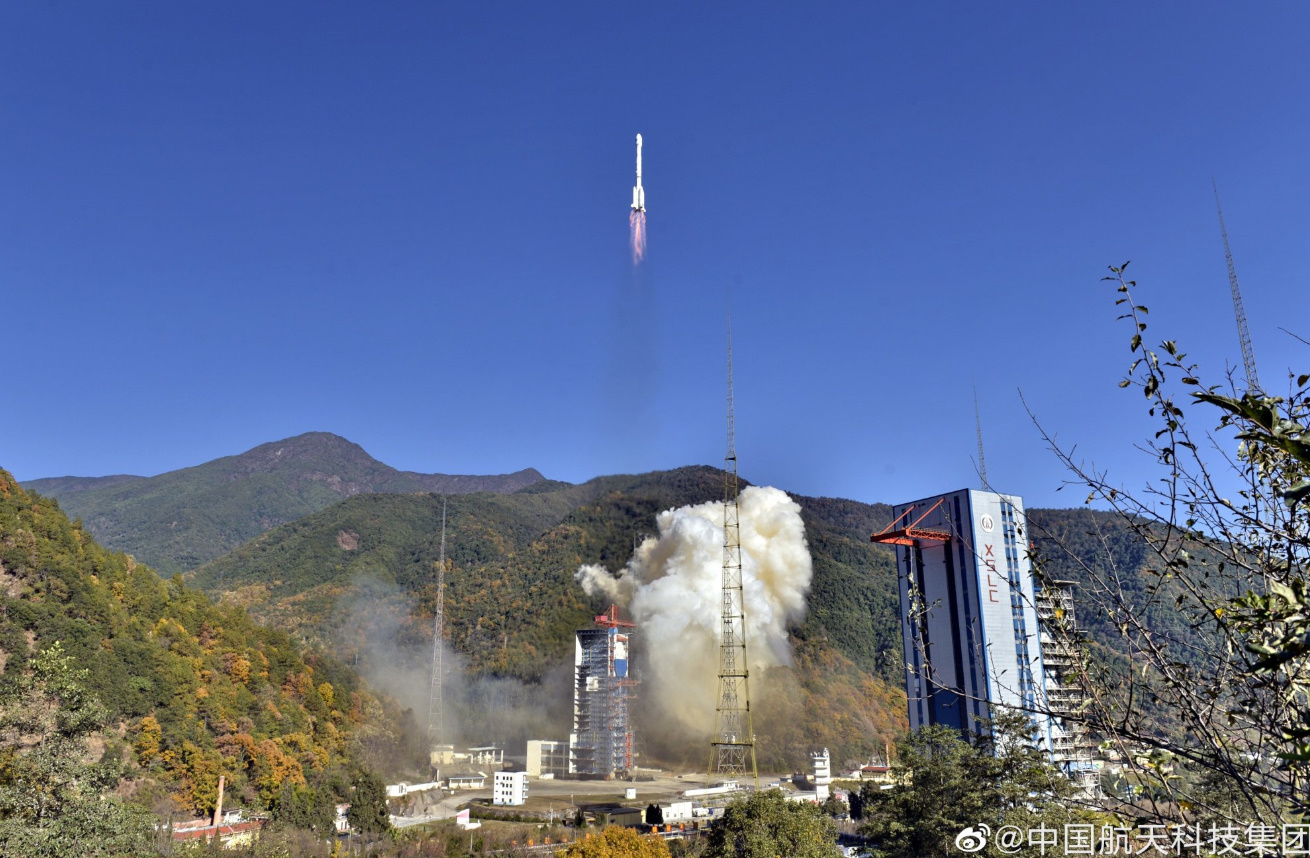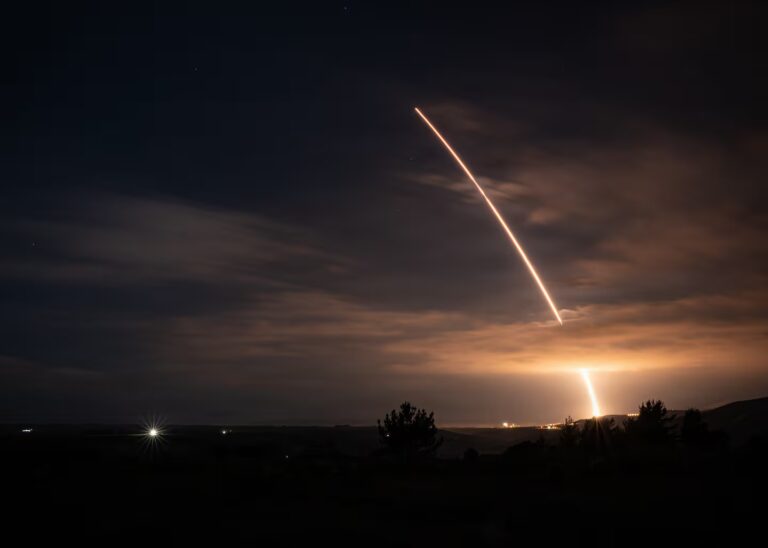
Source: NASASPACE
Joshua Bowes
In the emerging battleground of outer space, technology is developing at a rapid pace. Concomitantly, the competition between the world’s major powers—namely the U.S. and China—is intensifying. Both are ramping up efforts to leverage influence in the space domain through the procurement of advanced technologies such as high-powered satellites and autonomous weapons systems. While the United States has historically dominated military operations in space using an advanced network of satellites for reconnaissance and missile-warning systems, Beijing has worked diligently to close the gap, investing heavily and strategically in its space capabilities to counter Washington’s superiority. However, China’s militarization of space is not merely a race with Washington; it is also a quest for “space sovereignty,” or total operational freedom in the space domain, and a mission to secure Beijing’s interests in the long term, ensuring China’s progression toward becoming the world’s leading superpower.
Satellites
Between 2019 and 2021, China doubled the number of satellites active in its outer space constellation, increasing from 250 to 499. Between July 2024 and February 2025, Beijing added 40 intelligence, surveillance, and reconnaissance (ISR) satellites to its deployment, signaling an enhanced focus on its ability to gather space intelligence. The increase in ISR satellites reflects the People’s Liberation Army’s (PLA) growing strategic concentration on strengthening military situational awareness, with particular attention to U.S. activity in the Indo-Pacific. These satellites can provide real-time data on troop movements, naval operations, and defense readiness—critical information in the event of a major escalation such as a crisis with Taiwan. While the United States maintains a larger number of satellites overall, China has expanded its space intelligence program to account for U.S. military movements in the region, deploying at least 10 autonomous space situational awareness (SSA) satellites in Low Earth Orbit (LEO) to monitor U.S. assets and conduct rendezvous and proximity operations (RPO). The PLA’s growing satellite constellations are indicative of China’s “kill web” strategy, which has become a cornerstone of Beijing’s intelligentized modern warfare doctrine—that is, using a multi-domain, system-of-systems approach to leverage an asymmetric advantage over adversaries. The kill web strategy relies on unmanned aerial vehicles (UAVs) and other autonomous satellites to act as a multi-domain sensor network, providing real-time intelligence to support both defensive and offensive operations. The kill web also uses satellite guidance to coordinate long-range weapons, including anti-ship ballistic missiles (ASBMs) such as the DF-21 “carrier-killer” and hypersonic missiles such as the DF-ZF. The PLA’s precision-strike systems support rapid and all-encompassing offensive capabilities to target both defensive systems and naval carriers in a Taiwan contingency.
Counterspace Weapons and Non-Kinetic Warfare
While the PLA maintains a formidable missile attack force, it also possesses strong counterspace capabilities. China’s anti-satellite (ASAT) systems are wide-ranging, including the SC-19 missile and an array of directed-energy weapons (DEWs) such as microwave systems and electromagnetic pulse (EMP) weapons, which target satellite sensors to disrupt GPS and communications systems. DEWs offer a non-kinetic warfighting strategy that can damage enemy equipment without creating debris and potentially without escalating into a larger conflict. The PLA has also developed space-based jamming systems to target satellite communications and precision-guided weapons that rely on GPS. These tools aim to protect Chinese satellites while threatening adversaries’ assets, ensuring control over the orbital environment. Chinese strategists view U.S. reliance on satellites as a vulnerability, particularly for command, control, communications, computers, intelligence, surveillance, and reconnaissance (C4ISR) operations in the Indo-Pacific. Counterspace weapons target systems such as GPS and the Space-Based Infrared System (SBIRS) to disrupt U.S. military operations without direct kinetic confrontation. This provides an asymmetric advantage and deters attacks, thereby establishing superiority in space. By developing counterspace capabilities domestically, China avoids reliance on foreign technology or security guarantees—a core tenet of space sovereignty. This autonomy ensures the PLA can maintain dominance in a conflict independently of other nations.
Technological Independence and Indigenous Military Innovation
China’s military strategy rests on a core of establishing technological independence in an effort to counter U.S. dominance and assert strategic autonomy in the space domain. In doing so, the PLA has established a robust space ecosystem, including the China National Space Administration (CNSA) and the People’s Liberation Army Strategic Support Force (PLA-SSF), which have helped support recent indigenous space programs such as the Chang’e-5 sample return in 2020 and the Tianwen-1 Mars rover, which landed in 2021. Such achievements have presented opportunities for geopolitical signaling. Similarly, advancements in directed-energy weapons (DEWs) display China’s technological prowess, bolstering domestic pride and international influence, particularly among partners of the enormous Belt and Road Initiative (BRI). Further, the Beidou satellite system, completed in 2020 with 44 satellites, provides global positioning, navigation, and timing (PNT) services, rivaling American-made GPS. It includes encrypted military channels for secure Chinese military operations. As a system of systems, Beidou eliminates China’s dependence on GPS, which the U.S. could restrict in a conflict. As of 2025, 140 countries—and counting—use Beidou, enhancing China’s global influence and autonomy. Beidou supports precision-guided munitions, troop navigation, and missile targeting, ensuring the PLA can operate independently in scenarios such as a crisis in Taiwan. Technological independence also supports the BRI’s Space Silk Road, which offers satellite launches and Beidou services to partner nations, enhancing geopolitical leverage across regions.
China’s Taiwan Strategy
As the U.S. and China continue to galvanize greater space militarization efforts, Beijing’s intense focus on producing defense readiness enhances the PLA’s capabilities to control escalation in a potential conflict over Taiwan. China’s ASAT weapons and comprehensive surveillance, communication, and warning systems offer advanced capabilities for both an offensive and a defensive stance. In the event of a Taiwan conflict, China will seek to manage the escalation. Chinese military doctrine emphasizes soft-kill capabilities, such as electromagnetic pulse weapons (EMPs), jammers, and cyberattacks, allowing China to disrupt enemy operations without causing irreversible damage or triggering a larger war. In a Taiwan conflict, China could leverage space capabilities to support a blockade strategy, using satellite-based surveillance and navigation to enforce maritime exclusion zones while avoiding kinetic strikes to manage escalation. Such a strategy could place significant pressure on Taiwan without necessarily triggering U.S. intervention. Beijing’s preference for coercive gray-zone operations reflects an attempt to achieve its objectives without precipitating a larger battle. Space capabilities not only support these strategies but also increase the salience of managing escalation, as both sides’ reliance on space creates mutual vulnerabilities.
Long-Term Strategic Interests
China’s space program is tightly integrated with its broader economic and technological goals, fostering innovation and strengthening geopolitical reach for the long term. China’s counterspace capabilities extend to protecting its lunar and deep-space ambitions, such as the International Lunar Research Station (ILRS). Co-orbital systems could safeguard lunar assets from interference, ensuring China’s sovereign control over extraterrestrial resources like helium-3, a rare isotope that has emerged as a key resource for energy production and nuclear fusion. Further, China actively participates in shaping international space law and standards by influencing policies set by the International Telecommunication Union to safeguard its interests. In doing so, China positions itself as a leader in shaping the rules of space and a gatekeeper of the global space order. By developing robust space-based military capabilities, China can maintain situational awareness and deter potential aggressors, particularly in contested regions like the South China Sea and the greater Indo-Pacific. Additionally, China aims to launch a space-based industrial ecosystem, where it can leverage its influence to dominate global space markets. Beijing also seeks to expand its Belt and Road Space Information Corridor to provide services to developing nations, creating economic dependencies and geopolitical leverage, much as it has done with the Digital Silk Road (DSR). China’s partnerships with developing nations position it as a counterweight to U.S. dominance, offering technology transfers and infrastructure support without the political conditions often attached to U.S. agreements. By developing indigenous capabilities, China avoids reliance on foreign systems, reducing vulnerabilities to sanctions or export controls. China’s state-driven approach ensures rapid decision-making and resource allocation, enabling centralized control and consistent progress in space and lunar-based missions. China’s governance model is in contrast to that of the United States—Washington seeks to define normative leadership through the Artemis Accords, established in 2020 and signed by over 50 countries, which promote the deconfliction of space-based activities and the establishment of resource-extraction rights. Instead, Beijing has forged international partnerships under the ILRS with Russia and Pakistan.
China’s indigenous military innovation, technological independence, and vast array of state-of-the-art offensive and defensive space systems exemplify its increasing sovereignty in the space domain. Asymmetric counterspace innovation and domestically produced space navigation and directional systems promote a dual-use approach that strengthens China’s military forces on the battlefield and establishes a formidable opposition to American influence in the far reaches of outer space. The PLA’s role in space aligns with the CCP’s broader goal of building a world-class military by 2050. Militarization ensures that space contributes to national security and sovereignty, resonating with the public and reinforcing the CCP’s legitimacy. By ensuring autonomy, countering U.S. dominance, and asserting global influence, China presents a multipolar space order—one it seeks to dominate.
Joshua Bowes is a Nonresident Research Associate at the Center for Security, Strategy and Policy Research (CSSPR), University of Lahore.
The views expressed in this article are the author’s and do not necessarily reflect those of Pakistan Politico.




